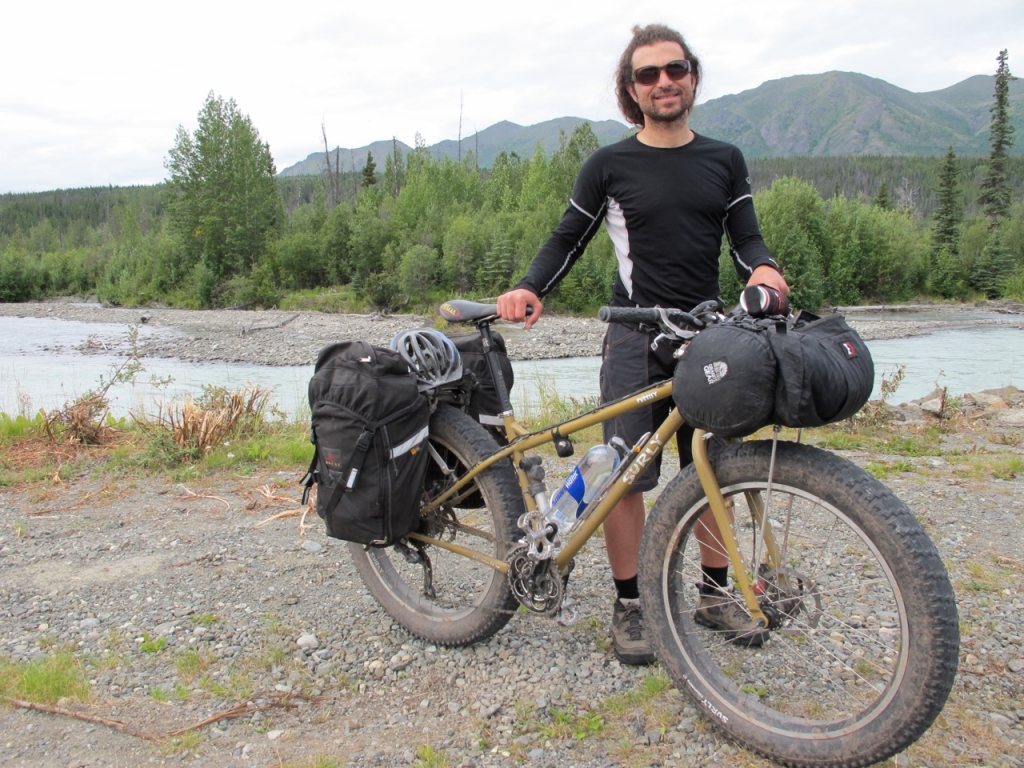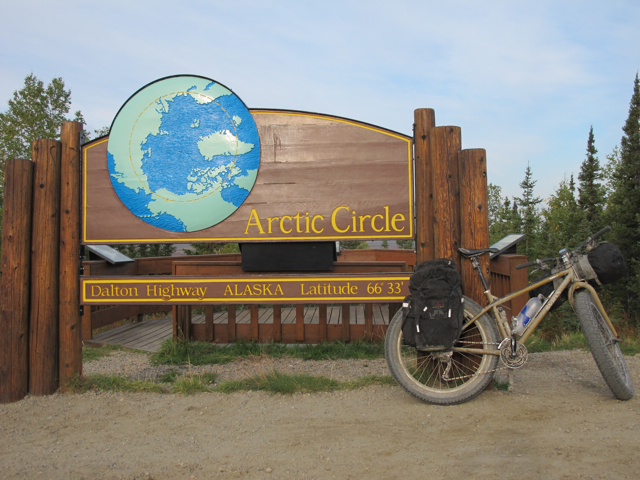For the six weeks and some 2,000 miles I cycle toured Alaska, I pedaled a Surly Pugsley. Fat bikes are unmatched on snow and sand and marshland. That’s why I got mine. But they’re also an invitation to explore, to move a little more deliberately and confidently than one sometimes does, and to never view any part of the map as regretfully off limits because you’re on the wrong machine. I enjoyed touring this way.
Yes, it was slower, yes, it was heavy, yes, I covered less ground than I might otherwise have. Of course, I’ve never been on a bike tour where I didn’t at some point fantasize about a different bike. I try to pay those inevitable irrationalities no mind in retrospect. On asphalt the Pugsley was cushy, comfortable and unhurried. On gravel roads and double track, I didn’t change my speed or style at all, as it just floated over imperfections. It’s a fantastic and easy bike on singletrack, even fairly technical sections. I rode it as a kind of amusing experiment on all these surfaces, and also because I knew there would be beaches that I’d want to explore that I otherwise couldn’t. It did that, too. Like most any bike, it disappears during the hours of moving through the landscape.
I was reminded while riding the Pugsley that the imagination is readily gripped by the bicycle as freedom and adventure. Every day people — many of whom I bet haven’t thought about bikes since they were kids — would go out of their way to ask me about the tires. In Fairbanks a guy in a Ford F150 held up traffic at the light to quiz me on where he could get one. A twenty-two year old flag woman reading Elle while working on a road crew waxed eloquent about how it’s the best bike she’s ever seen and how she and her boyfriend should each get one. A crowd of rowdy geologists gathered around the bike in Coldfoot. Hunters, families at supermarkets, truck drivers, post office workers, kids, old guys in camo, folks on a smoke break outside convenience stores: somehow just looking at fat bikes gets people fired up in a positive way about bicycles. (A friend quipped that, if we want to popularize cycling as a lifestyle in America, we should abandon all that hipster urban organic grocery store commuter fixie or Dutch bike nonsense and just ride fat tire bikes.) The Pugsley opened up conversations and reflection on being outside. That alone would have been enough to validate the decision to be on it for this trip.
Honestly, it won’t be my default touring bike. I prefer fast and light and will return to that style. (2012 Update: This turns out not to be true. I was completely wrong!.) Nor would I hesitate, though, to tour on a fat bike again if it looked like their tremendous virtues might play a role in the terrain or challenge or aesthetic of my destination.
Notes:
– As mentioned elsewhere on this blog, my setup consisted in two Arkel rear panniers on an Old Man Mountain Cold Springs rack and a Revelate Designs front sling and pocket holding my tent and sleeping bag and pad (complete gear list here). The front sling was supported by a Rivendell Mark’s rack with extra-long (350mm) Nitto mounting struts. Weight varied considerably depending on how much food I was carrying. When stores were readily available I carried almost no food and the entire setup was in the neighborhood of 60 lbs. At the beginning of the Dalton Highway leg with food for eight days, I would guess the entire load went up to about 90 lbs. The Pugsley was completely stable throughout. I could pedal out of the saddle on steep climbs and could descend at speed. There was no shimmy or poor behavior.
– I was running two Endomorphs and had no flats at all during the tour. The rear one is quite worn now, but the front has plenty of life left in it.
– The big tires seemed to me to spit an unusual amount of spray in the wet. If I tour again on it, I will certainly make or acquire fenders.
– Off road tire pressure was about 9 psi; on road, around 16.
– I mailed the bike home through the US Postal service. $106. It arrived back to me in on the East coast of the US in three weeks.




